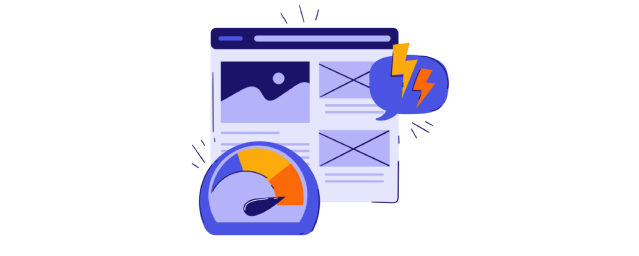A strong online presence is crucial for HVAC companies looking to attract new customers. But did you know that the speed of your website can make or break your lead generation efforts? In this article, we’ll dive into why a fast-loading website is essential for HVAC businesses and how you can optimize your site to capture more leads.
Get HVAC Leads
The Need for Speed in the HVAC Industry
Let’s face it – when someone’s AC breaks down in the middle of summer, they won’t wait for a slow website to load. They need help fast, and your website needs to deliver information just as quickly. Studies show that 47% of consumers expect a web page to load in 2 seconds or less and 40% will abandon a website that takes more than 3 seconds to load. That’s a lot of potential customers you could be losing before they even see what you have to offer!
How Website Speed Impacts Your HVAC Business
- First Impressions Matter: When a potential customer lands on your website, you have mere seconds to make a good impression. A fast-loading site shows that you’re professional, efficient and ready to help – qualities that are essential in the HVAC industry.
- Better Search Engine Rankings: Google has made it clear that site speed is a ranking factor. This means that a faster website can help you appear higher in search results, making it easier for potential customers to find you when they’re searching for HVAC services.
- Improved User Experience: A smooth, fast-loading website keeps visitors engaged and makes it more likely that they’ll explore your services, read your content and ultimately contact you for their HVAC needs.
- Higher Conversion Rates: Quick-loading pages can significantly boost your conversion rates. The study found that a 1-second delay in page load time can lead to a 7% reduction in conversions. For HVAC companies, this could mean the difference between landing a new client or losing them to a competitor.
Top 5 Strategies to Speed Up Your HVAC Website

Now that we understand why speed is crucial, let’s look at some practical ways to make your HVAC website load faster:
- Optimize Your Images: Large, high-resolution images can slow down your site considerably. Use tools like TinyPNG or ShortPixel to compress your images without losing quality. Also, consider implementing lazy loading, which only loads images as the user scrolls down the page.
- Minify Your Code: Streamline your website’s HTML, CSS and JavaScript files by removing unnecessary characters and whitespace. Tools like Minifier can help you do this easily.
- Leverage Browser Caching: Set up browser caching so that returning visitors don’t have to reload all of your site’s elements every time they visit. This can significantly speed up load times for repeat customers.
- Use a Content Delivery Network (CDN): A CDN like Cloudflare or Amazon CloudFront can distribute your website’s static files across multiple servers worldwide, reducing load times for visitors regardless of their location.
- Choose a Reliable Hosting Provider: Your hosting provider plays a crucial role in your website’s speed. Look for providers that offer solid-state drives (SSDs) and have a reputation for fast server response times.
Real-World Results: HVAC Companies Winning with Fast Websites

Let’s look at a couple of success stories to see the real impact of a fast-loading website:
- Service Experts Heating & Air Conditioning improved their lead management process by optimizing their digital tools and response times. By implementing a mobile-responsive design and optimizing their site for faster loading on smartphones, they reduced the average load time for mobile users to under 2 seconds. This change not only decreased bounce rates but also led to a significant improvement in their search engine rankings, driving more organic traffic to their website.
- One Hour Heating & Air Conditioning noticed a 30% increase in lead conversions after improving their website’s load time. They achieved this by optimizing their site’s code, compressing images and leveraging browser caching, which reduced their average page load time from 3.7 seconds to just 1.5 seconds. As a result, they not only saw more inquiries from potential customers but also improved their overall user experience.
Tools to Check Your Website Speed

Ready to see how your HVAC website stacks up? Here are some free tools you can use to test your site speed:
These tools will not only give you a speed score but also provide specific recommendations for improvements.
Keeping Your HVAC Website in Top Shape
Remember, optimizing your website speed isn’t a one-time task. Here are some best practices to maintain a fast-loading site:
- Regularly test your site speed and make adjustments as needed
- Keep your content management system, plugins and themes up to date
- Be mindful of new features or content you add to your site and how they might impact load times
- Prioritize mobile optimization, as more and more customers are searching for HVAC services on their smartphones
The Future of Web Performance for HVAC Lead Generation
As we look ahead, emerging technologies like 5G and HTTP/3 promise even faster web experiences. Google’s Core Web Vitals are also becoming increasingly important for search rankings. Staying ahead of these trends can give your HVAC business a competitive edge in the industry.
Conclusion
When it comes to HVAC services, every second counts – both in responding to customer needs and in how quickly your website loads. By prioritizing your website’s speed, you’re not just improving your online presence; you’re setting the stage for more leads, more conversions and ultimately, more satisfied customers.
Don’t let a slow website be the reason you miss out on valuable HVAC leads. Take action today to speed up your site and watch your lead generation soar. Remember, in the race for HVAC customers, the swift website wins!



